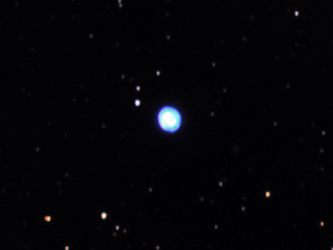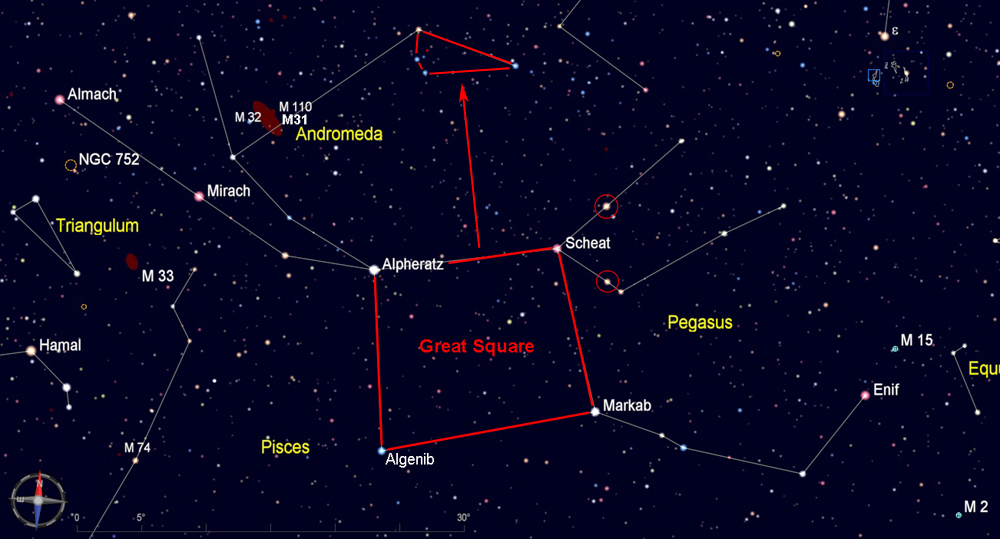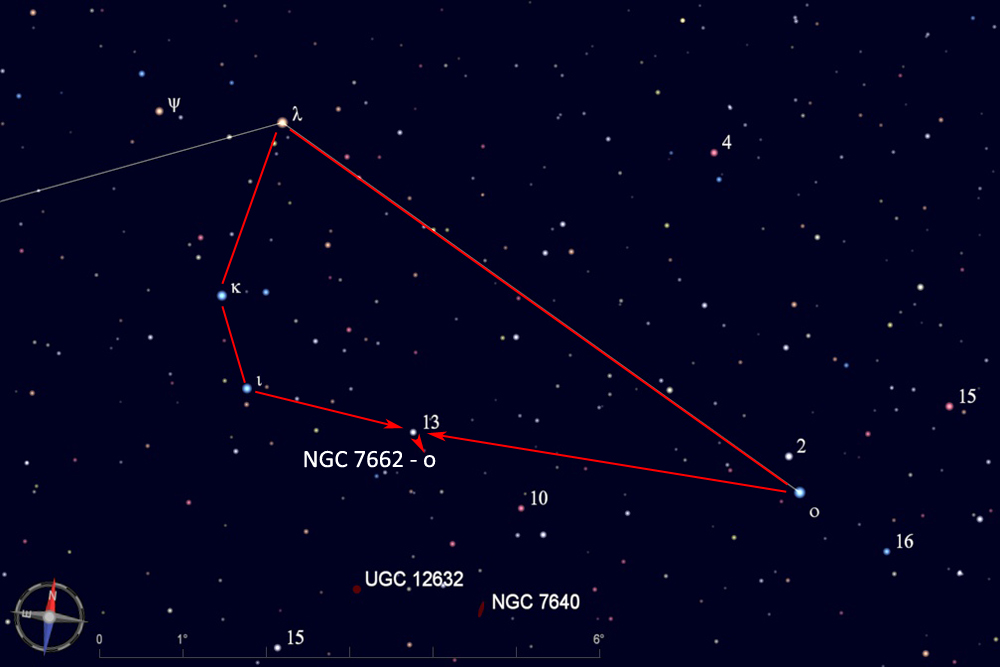
Start by finding the Great Square of Pegasus, which rises in the eastern sky during the early fall evenings, is high overhead later in the fall, and sinks in the western sky during early winter. To be sure you know how the square is oriented in the sky, look for the two stars outside the northwest corner of the square (circled in the chart below) that form a small triangle with Scheat. Then, from the northern edge of the Great Square look about 15 degrees north for a group of 4 dim stars in the shape of a pie slice.

Look along the southern edge of the pie slice for the star 13 Andromedae. At magnitude 5.8, it should be easy to see with binoculars or a finderscope. Center on this star, and then move just about 1/2 degree to the southwest, and the Blue Snowball should be visible.
